Why is my bougainvillea not flowering? Expert advice to revive your plant
If your bougainvillea appears woody and low on flowers, fear not - there are ways to revive your plant and improve blooming
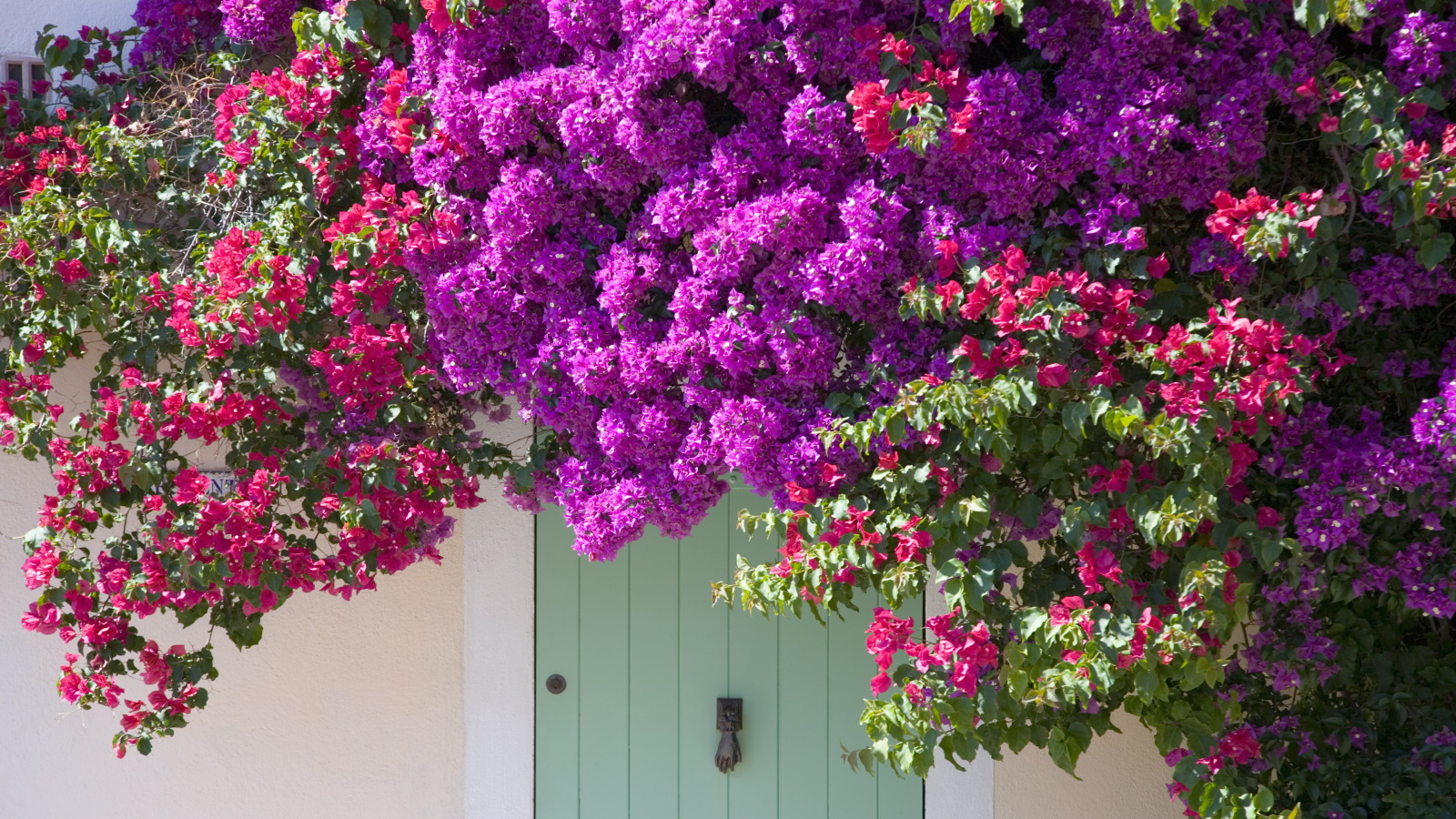

Bougainvilleas are some of the best climbing plants, typically cascading over garden walls and fences with bright and brilliant flowers. These tropical-looking plants are prized for their long-flowering nature, often blooming for many months during summer if the growing conditions are right.
In smaller spaces, bougainvilleas can be grown in pots and trained to cover trellises or garden structures. Annually pruning your bougainvilleas will help to restrict their growth, keeping them compact and floriferous.
Fortunately, learning how to care for and grow bougainvillea is straightforward, and these climbers thrive in sunny, warm regions. However, sometimes bougainvilleas can struggle, and blooming can be much reduced. If your plant needs some love and attention this year, fear not, our guide will help assess why your bougainvillea might not be flowering, and offer solutions that can help.
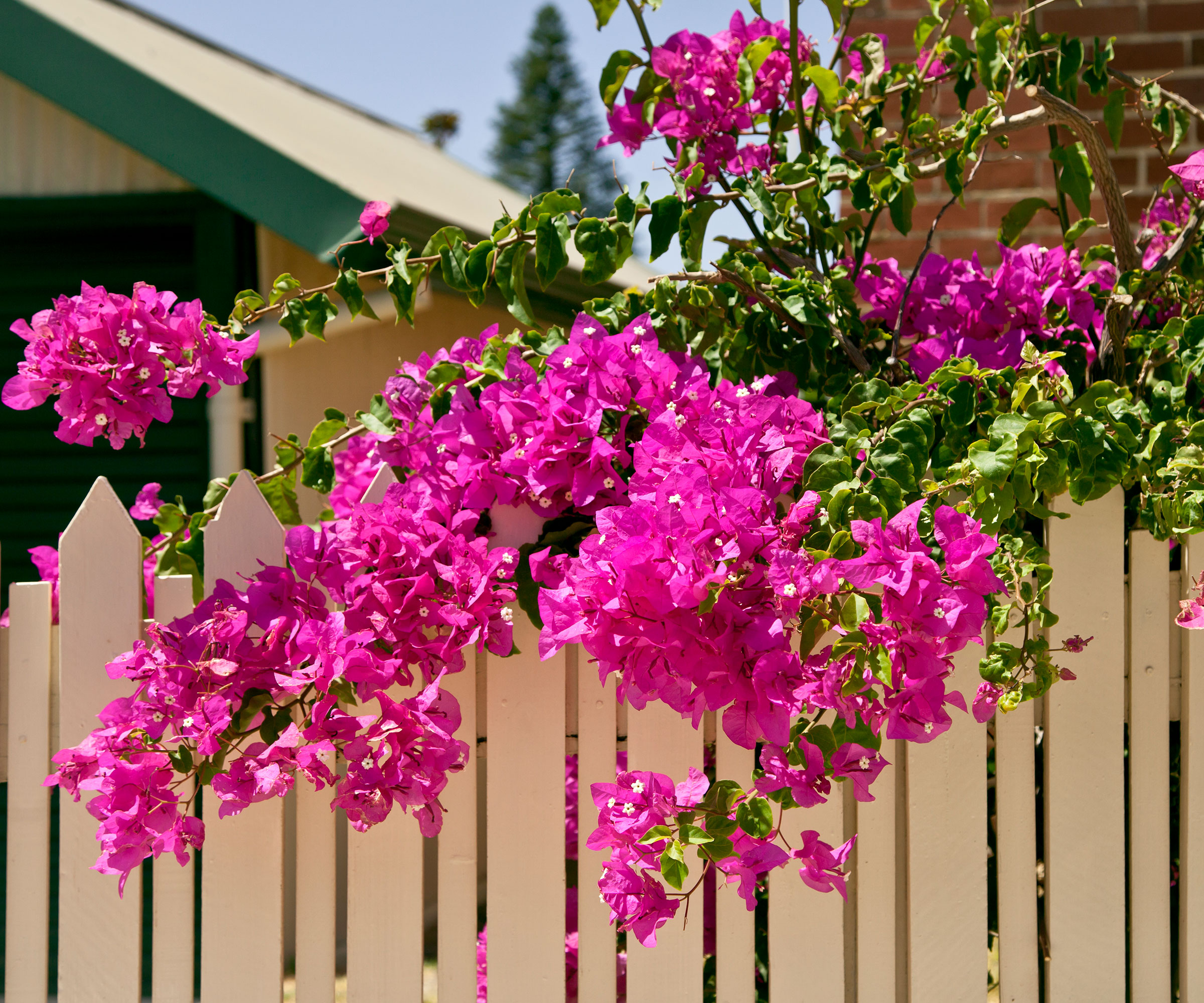
Why is my bougainvillea not flowering?
Bougainvillea plants are native to South America, growing in Brazil, Peru and Argentina. These climbing plants are not hardy, and only those gardeners who reside in US hardiness zone 9 and US hardiness zone 10 can leave a bougainvillea plant outside in the winter months and expect it to survive.
While these plants are prized for their flowers, sometimes bougainvilleas can begin to look tired and woody, failing to produce many blooms. There are three main reasons why this might be the case.
Overwatering your bougainvillea
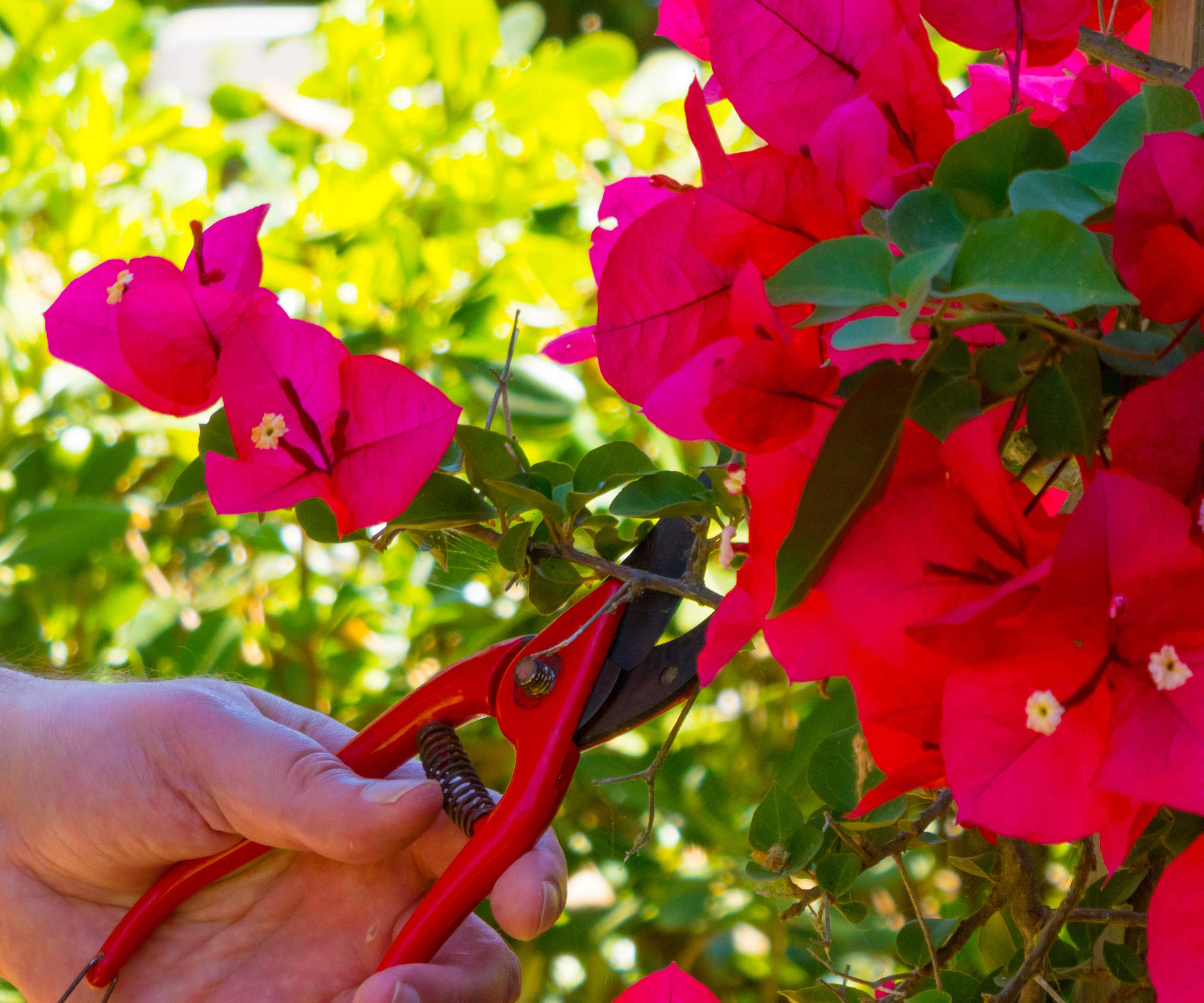
'Bougainvillea plants love the sun, thriving in tropical regions,' says Bert Bast, garden expert and owner of Bast Brothers Garden Center. 'While they can be thirsty plants, these plants do better drying out between waterings,' Bert continues.
Bougainvilleas are drought-tolerant and thrive in dry weather, so the best approach to caring for these flowering climbers might seem cruel, but allowing the soil to dry out in between waterings will help to produce more flowers.
'Excessive water might lead to lush, green foliage, but can inhibit flowering,' Bert adds, meaning that your plant will appear verdant without many booms.
I would advise watering deeply, once per week, and sticking to a watering schedule. One tool to help with watering would be a monitor, such as this soil moisture meter, available from Walmart.

Bert Bast is a garden expert and owner of Bast Brothers Garden Centre. Established in 2014 and nestled in the heart of Mullica Hill, NJ, Bast Brothers Garden Center is a destination for all things garden.
Finding the right position in the yard for bougainvillea plants
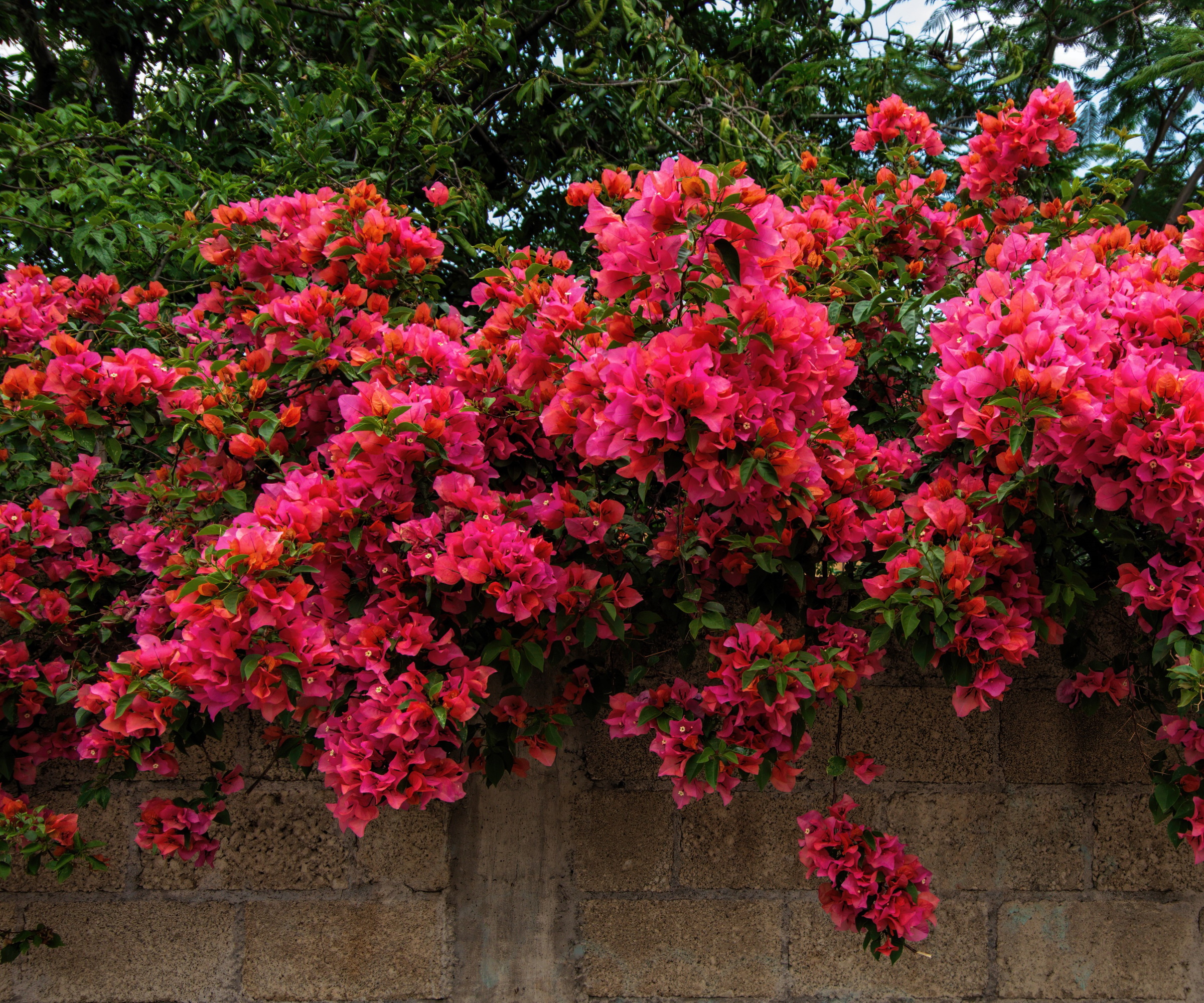
'Bougainvillea plants may fail to flower for various reasons,' says Sam Niemann, garden expert and founder of Grown by Design, a boutique landscape design firm based in San Diego. 'One of the main reasons can be insufficient sunlight.'
Bougainvilleas thrive in full sun, doing best in direct sunlight for at least 6 hours of the day. In shady positions, your climbers can struggle.
'These plants require full sun to bloom optimally,' Sam continues. 'If your plant has elongated stems with wide gaps between the leaves, it’s a sign that it’s not getting enough light.'
In the right position, bougainvillea plants can grow up to 4 feet in one season, meaning that you can buy small, starter bougainvillea plants, available from Walmart, and they will soon become large flowering climbers, filling walls and fences with blooms.

Sam is a lifelong gardener whose passionfor plants and nature has been the driving forcebehind his extensive knowledge and expertise inhorticulture. He studied at San Diego State University, earning a degree in Finance whilesimultaneously founding Grown by Design, aboutique landscape design firm.
Feeding your bougainvillea plants

'Bougainvilleas are not heavy feeders,' Sam continues. 'If your plant is growing vigorously with little to no flowers, reduce the amount of fertilizer you are using.'
While you might think feeding your plants will help them thrive, too much fertilizer can do more harm than good.
'To encourage bougainvilleas to flower, provide them with the right growing conditions, allowing the soil to dry out between waterings, ensure they receive ample sunlight, and avoid over-fertilizing,' Sam adds.
If you are growing your plant in a pot, you may find that feeding every other month can help with flowering, but I would suggest using below the recommended amount of fertilizer. It would be best to use a fertilizer intended for flower production, such as this Miracle-Gro bloom booster fertilizer, available from Walmart.
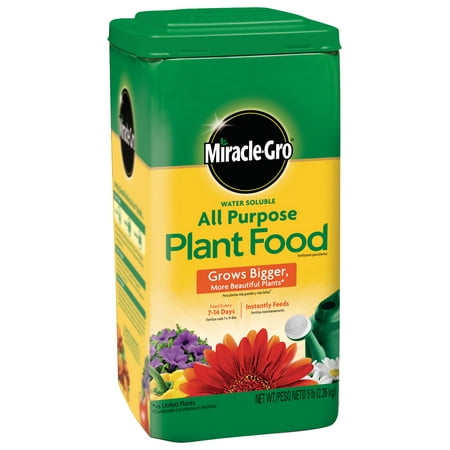
This Miracle-Gro all purpose plant food helps plants to grow bigger in rapid time, and instantly feeds vegetables, trees, shrubs, and herbs with the nutrients your soil needs to grow healthy roots, stems, petals, and leaves.
FAQs
What fertilizer is recommended for bougainvillea plants?
Over-fertilizing bougainvillea can harm your plant, so it is always best to use less fertilizer than you might for other plants. Fertilizers high in potassium, or potash, are useful for flowering and fruiting plants and vegetables, such as this potassium feed from Amazon.
Ensuring that your bougainvillea is in the right place and using the right amount of water and fertilizer will help your climbing plants thrive. For more bougainvillea growing information, see our guide on how to propagate bougainvillea, to increase your collection this year.
Sign up to the Homes & Gardens newsletter
Design expertise in your inbox – from inspiring decorating ideas and beautiful celebrity homes to practical gardening advice and shopping round-ups.

Thomas is a Content Editor within the Gardens Team at Homes and Gardens. He has worked as a professional gardener for both public spaces and private estates, specializing in productive gardening, growing food and flowers. Trained in Horticulture at the Garden Museum, he has written on gardening and garden history for various publications, including The English Garden, Gardens Illustrated, Hortus, The London Gardener and Bloom. He has co-authored a Lonely Planet travel book, The Tree Atlas, due out in 2024.
-
 5 things people with clean upholstery always do – simple, quick and oh-so-effective
5 things people with clean upholstery always do – simple, quick and oh-so-effectiveEnsure your furnishing looks clean year-round with these expert tips
By Seraphina Di Mizzurati Published
-
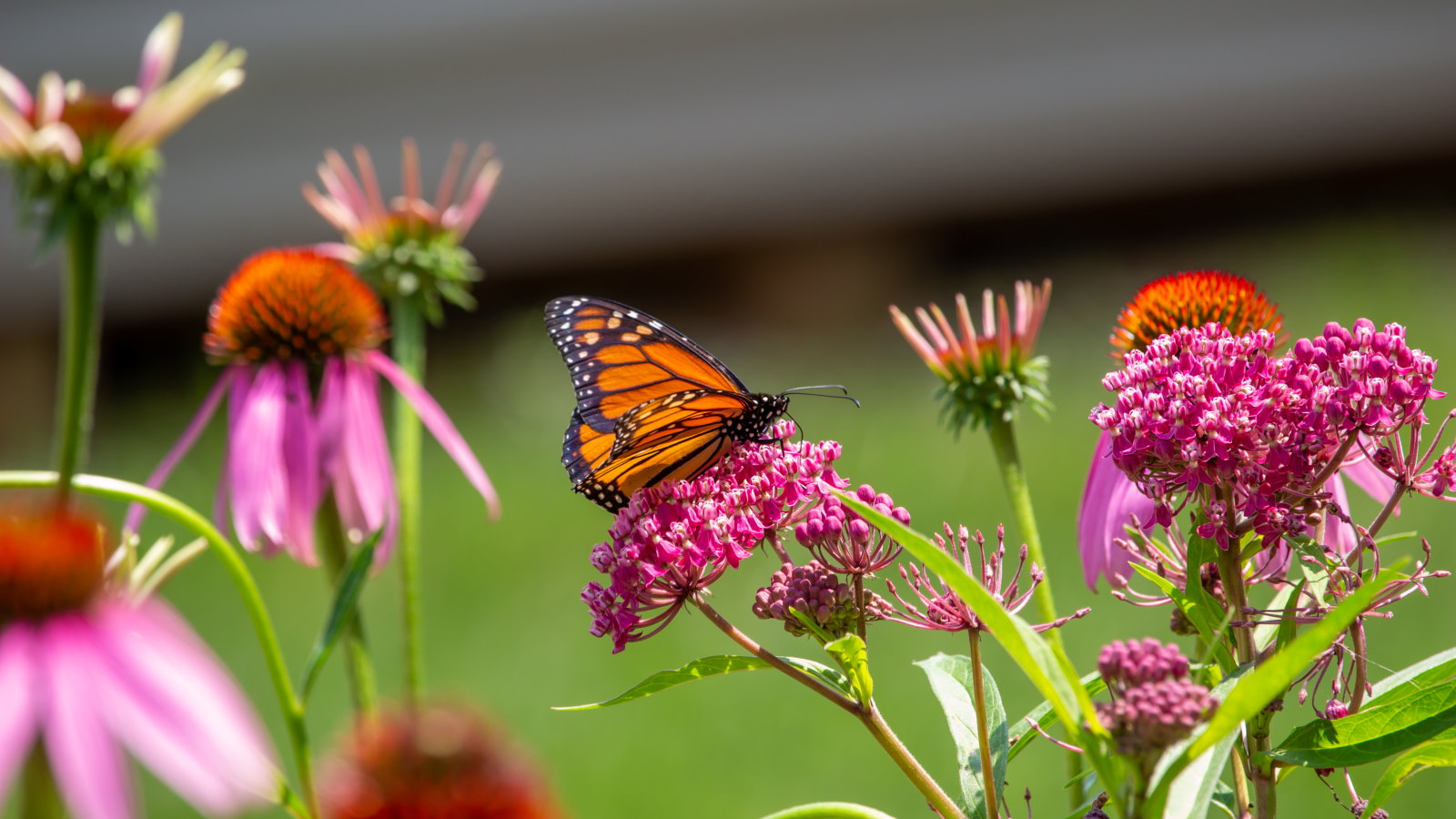 7 native perennials to plant in April – for glorious flowering displays to attract bees, butterflies, and hummingbirds
7 native perennials to plant in April – for glorious flowering displays to attract bees, butterflies, and hummingbirdsDiscover some of the best perennials to plant in April to make your garden a hotspot for wildlife
By Drew Swainston Published